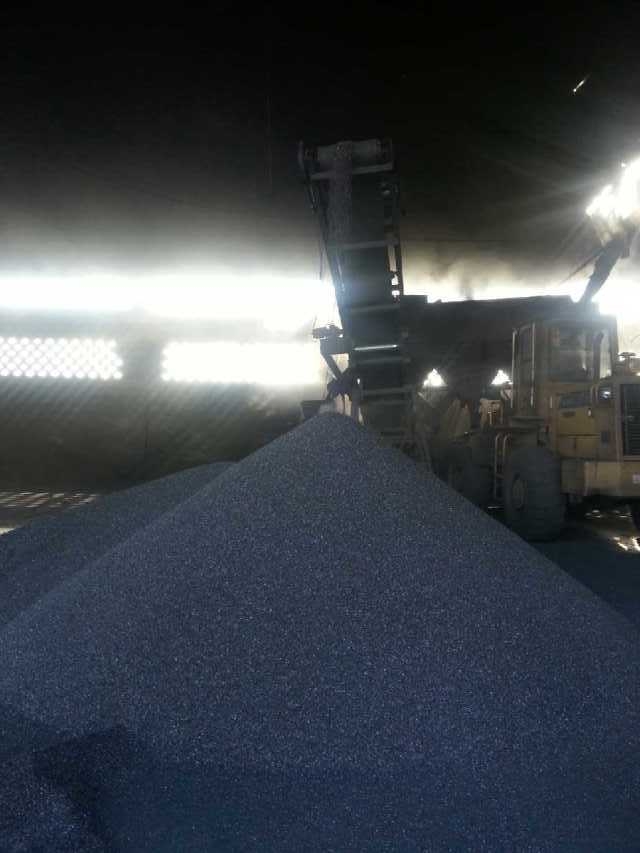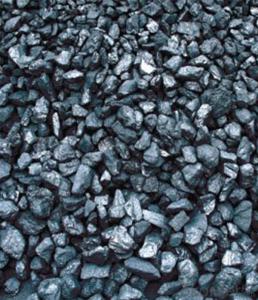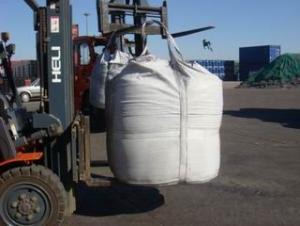FC 92% Calcined Anthracite Used In Steel Making
- Loading Port:
- China Main Port
- Payment Terms:
- TT or LC
- Min Order Qty:
- -
- Supply Capability:
- -
OKorder Service Pledge
OKorder Financial Service
You Might Also Like
FC 92% Calcined Anthracite Used In Steel Making
•Feature:
All of our goods are made in the best quality of world famous Ningxia Taixi Washed Anthracite Coal. All of our products are with High carbon, Low ash, low sulphur, Low Moisture.
•Application:
The Calcined Anthracite Coal/Gas Calcined Anthracite Coal/Carbon Raiser is mainly used in steelmaking in electrical stove, screening water, shipbuilding sandblast to remove rust. It can reduce the cost of steelmaking effectively by replacing the traditional petroleum coke of carburant.Also can improve the Carbon content in steel-melting and Ductile iron foundry.
•Experience:
Our Factories have been producing Carbon additive, Electrically Calcined Anthracite Coal, Calcined Anthracite Coal,Gas Calcined Anthracite Coal for more than 20 years.And we’ve been in carbon products exporting business for more than 10 years before our this company newly established.
SPECIFICATION
PARAMETER UNIT GUARANTEE VALUE | |||||
F.C.% | 95MIN | 94MIN | 93MIN | 92MIN | 90MIN |
ASH % | 4MAX | 5MAX | 6MAX | 7MAX | 8MAX |
V.M.% | 1 MAX | 1MAX | 1.5MAX | 1.5MAX | 1.5MAX |
SULFUR % | 0.5MAX | 0.5MAX | 0.5MAX | 0.5MAX | 0.5MAX |
MOISTURE % | 0.5MAX | 0.5MAX | 0.5MAX | 0.5MAX | 0.5MAX |
Size can be adjusted based on buyer's request.
Package:
1: In MT bags
2: IN 25kgs bags
3: IN 10KG bags
4: or as buyer's request
Pictures of Calcined Anthracite:


- Q:What are the impacts of carbon emissions on the stability of polar ice caps?
- The stability of polar ice caps is significantly affected by carbon emissions, which arise primarily from the burning of fossil fuels. This process releases substantial amounts of carbon dioxide into the atmosphere, a greenhouse gas that traps heat and contributes to global warming and climate change. Consequently, the ice caps in the polar regions, which are extremely sensitive to temperature changes, experience accelerated melting as the Earth's temperature rises due to increased carbon emissions. This leads to a rise in sea levels, with far-reaching consequences for coastal regions globally, including increased flooding, erosion, and the loss of valuable coastal ecosystems. Furthermore, the preservation of the polar ice caps is vital for maintaining the Earth's climate balance. These ice caps play a crucial role in reflecting sunlight back into space, serving as a natural cooling mechanism for the planet. However, as they melt, less sunlight is reflected, resulting in more absorption by the Earth's surface and exacerbating the warming effect. This creates a feedback loop, where the melting of ice caps leads to further warming, causing more ice to melt. The impacts of carbon emissions on polar ice caps extend beyond rising sea levels and climate change. The loss of ice also disrupts the delicate balance of ecosystems in these regions. Polar ice caps provide habitat and sustenance for a diverse range of organisms, including polar bears, seals, and various species of birds. Consequently, the melting of ice disrupts these ecosystems, leading to declines in wildlife populations and potential extinctions. Moreover, the melting of polar ice caps also has repercussions for global ocean currents and weather patterns. The melting ice forms cold, dense water that sinks to the bottom of the ocean and drives crucial oceanic circulation patterns. Changes in these patterns can have far-reaching consequences, such as altering the distribution of marine species, impacting fisheries, and influencing regional climates. To mitigate the impacts of carbon emissions on polar ice caps, it is essential to reduce greenhouse gas emissions and transition to cleaner and renewable energy sources. International initiatives, such as the Paris Agreement, are aimed at limiting global warming and reducing carbon emissions to prevent further melting of the ice caps. Additionally, supporting research and monitoring programs in polar regions can enhance our understanding of these complex systems and facilitate the development of effective conservation strategies.
- Q:What is carbon nanoelectrode?
- Carbon-based materials, usually in the form of nanotubes or nanowires, are used to create carbon nanoelectrodes. These electrodes are incredibly small, with diameters on the nanoscale, typically ranging from a few to a few hundred nanometers. The unique properties of carbon nanoelectrodes make them highly desirable for various applications in electrochemistry. Their small size provides a large surface area to volume ratio, resulting in improved sensitivity and electrochemical performance. In addition, carbon nanoelectrodes have excellent electrical conductivity and mechanical strength, making them ideal for miniaturized electronic devices and sensors. They can be easily integrated into platforms like microfluidic systems or biosensors, enabling efficient and accurate detection of chemical or biological substances. Furthermore, carbon nanoelectrodes have demonstrated great potential in energy storage devices, such as supercapacitors and batteries. Their high electrical conductivity and large surface area facilitate rapid charge and discharge rates. Overall, carbon nanoelectrodes are an exciting advancement in the field of nanotechnology. They offer unique properties and unparalleled performance for various applications in electronics, sensing, and energy storage.
- Q:What are the benefits of carbon fiber?
- Carbon fiber "an hand in a velvet glove lighter than aluminum," the quality, but the strength is higher than that of steel, and has the characteristics of corrosion resistance, high modulus, in the national defense and civilian areas are important materials. It has not only the intrinsic characteristics of carbon materials, but also the softness and processability of textile fibers. It is a new generation of reinforced fiber.
- Q:How are carbon compounds classified?
- Carbon compounds are classified based on their structural arrangement, functional groups, and the type of bonds they form with other elements.
- Q:What is carbon offsetting in the energy sector?
- The energy sector engages in carbon offsetting by compensating for the greenhouse gas emissions generated from energy generation and consumption activities. This practice involves investing in projects that reduce or eliminate carbon dioxide (CO2) and other greenhouse gas emissions from the atmosphere. The main objective is to achieve a balance between the emissions released and the emissions reduced. Greenhouse gas emissions from the energy sector, particularly from the burning of fossil fuels like coal, oil, and natural gas, contribute significantly to global emissions. Carbon offsetting in this sector aims to mitigate the environmental impact of these emissions by financing projects that promote renewable energy, energy efficiency, and other measures to reduce carbon. There are various types of projects that can be supported through carbon offsetting in the energy sector. For instance, investments can be made in renewable energy projects such as wind farms, solar power plants, or hydropower facilities. These projects generate clean energy without emitting greenhouse gases and help replace fossil fuel-based energy sources, thus reducing overall emissions. Moreover, carbon offsetting can also support energy efficiency projects. These initiatives focus on reducing energy consumption by implementing energy-efficient technologies, improving insulation, or optimizing industrial processes. By reducing energy demand, these projects indirectly contribute to lower greenhouse gas emissions. Additionally, carbon offsetting in the energy sector can involve supporting initiatives that remove carbon dioxide from the atmosphere. These projects often include reforestation or afforestation efforts, which involve planting trees or restoring degraded forests. Trees absorb and store carbon dioxide through photosynthesis, thus offsetting emissions and combating climate change. In summary, carbon offsetting in the energy sector is crucial for transitioning towards a sustainable and low-carbon future. By investing in projects that reduce or eliminate greenhouse gas emissions, individuals, organizations, and governments can take responsibility for their carbon footprint and contribute to global efforts in addressing climate change.
- Q:Which carbon content is larger, steel or pig iron?
- Iron and steel is distinguished by carbon: carbon content below 2.11% for carbon steel, according to can be divided into carbon steel low carbon steel (WC = 0.25%), carbon steel (WC0.25% - 0.6%) and high carbon steel (WC>0.6%);
- Q:How does carbon impact the availability of clean air?
- Carbon impacts the availability of clean air by contributing to the formation of air pollutants such as carbon dioxide (CO2) and carbon monoxide (CO). These greenhouse gases trap heat in the atmosphere, leading to global warming and climate change. Additionally, carbon emissions from burning fossil fuels and other human activities can react with sunlight and other pollutants, forming ground-level ozone and particulate matter, which can negatively affect air quality and human health. Therefore, reducing carbon emissions is crucial to maintaining clean air and mitigating the adverse impacts of pollution.
- Q:What are the consequences of increased carbon emissions on economic stability?
- Economic stability is significantly impacted by the increase in carbon emissions. Climate change worsens as a result, resulting in more frequent and severe natural disasters like hurricanes, floods, and wildfires. These events cause immense economic damage, including infrastructure destruction, property loss, and supply chain disruption. Moreover, the economic implications of climate change, driven by the rise in carbon emissions, are long-term. Coastal cities and industries are threatened by rising sea levels, leading to potential population displacement and valuable asset loss. Agricultural productivity is affected by extreme heatwaves and droughts, impacting food security and causing price increases. These climate-related disruptions can destabilize economies, especially in vulnerable regions highly dependent on agriculture or tourism. Furthermore, substantial financial investments are required for climate change mitigation and adaptation efforts, such as transitioning to cleaner energy sources and implementing climate policies. This strains government budgets and diverts resources from other socio-economic priorities, potentially resulting in reduced funding for education, healthcare, and infrastructure development. Additionally, increased carbon emissions have economic consequences beyond immediate climate-related impacts. The reliance on fossil fuels as the primary energy source contributes to volatile oil prices, which can disrupt global markets and affect economic stability. As the world moves towards a low-carbon economy, industries heavily reliant on fossil fuels may face significant challenges, leading to job losses and economic upheaval. To summarize, the increase in carbon emissions has extensive effects on economic stability. Climate change causes more frequent and severe natural disasters, resulting in significant economic damage. Responding to climate change through mitigation and adaptation efforts strains government budgets and diverts resources from other critical sectors. Moreover, the reliance on fossil fuels poses long-term risks to industries tied to these resources. It is essential to address carbon emissions to safeguard economic stability and foster sustainable growth.
- Q:How does carbon affect the formation of avalanches?
- Carbon does not directly affect the formation of avalanches. Avalanche formation primarily depends on factors such as snowpack stability, weather conditions, terrain features, and human activities. Carbon is not a significant factor in these processes.
- Q:Is the hardness or softness of the steel with higher carbon content?
- With the increase of carbon content, the strength and hardness of steel increase, while the plasticity and toughness decrease. When the carbon content is more than 1%, the strength of steel decreases.
1. Manufacturer Overview |
|
|---|---|
| Location | |
| Year Established | |
| Annual Output Value | |
| Main Markets | |
| Company Certifications | |
2. Manufacturer Certificates |
|
|---|---|
| a) Certification Name | |
| Range | |
| Reference | |
| Validity Period | |
3. Manufacturer Capability |
|
|---|---|
| a)Trade Capacity | |
| Nearest Port | |
| Export Percentage | |
| No.of Employees in Trade Department | |
| Language Spoken: | |
| b)Factory Information | |
| Factory Size: | |
| No. of Production Lines | |
| Contract Manufacturing | |
| Product Price Range | |
Send your message to us
FC 92% Calcined Anthracite Used In Steel Making
- Loading Port:
- China Main Port
- Payment Terms:
- TT or LC
- Min Order Qty:
- -
- Supply Capability:
- -
OKorder Service Pledge
OKorder Financial Service
Similar products
New products
Hot products






























